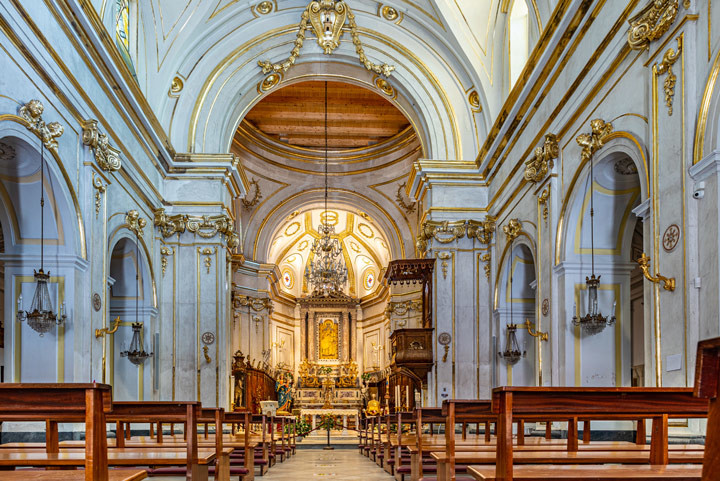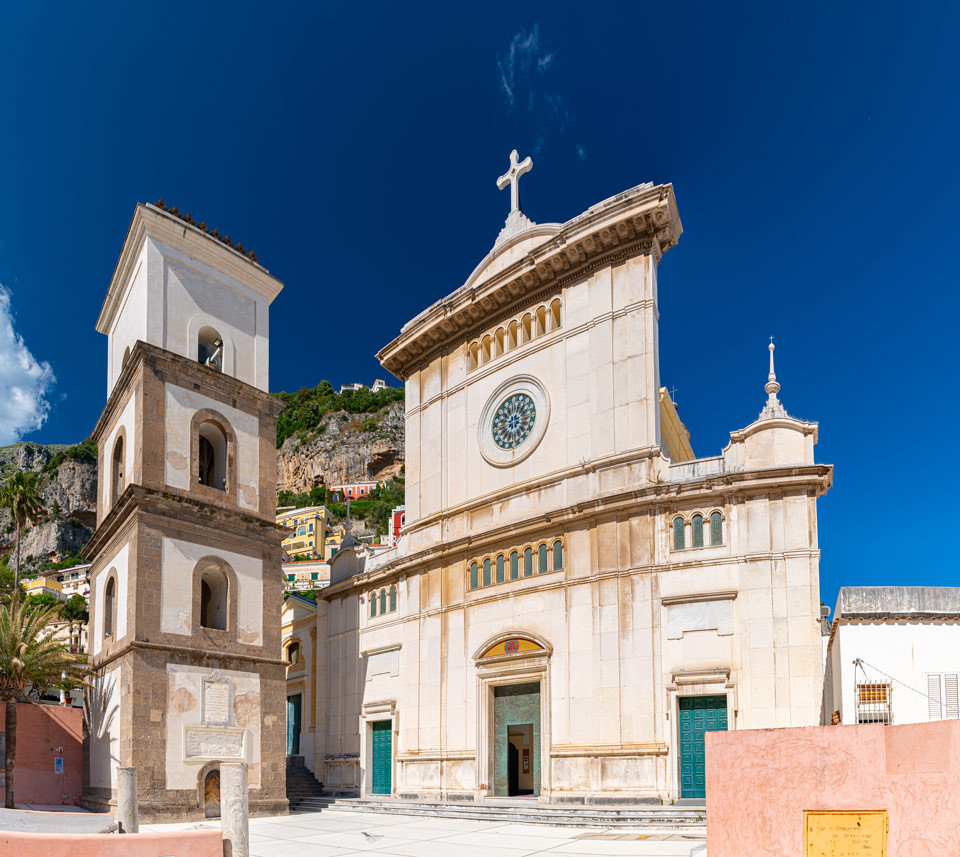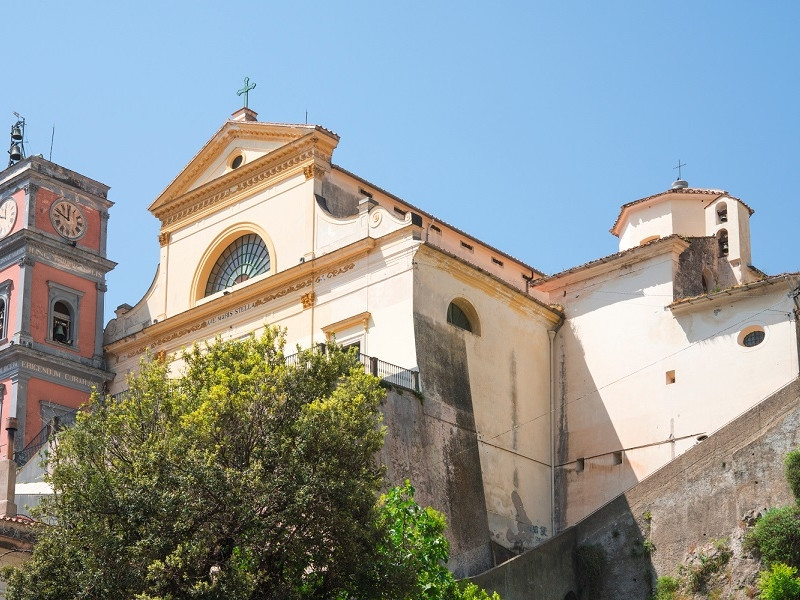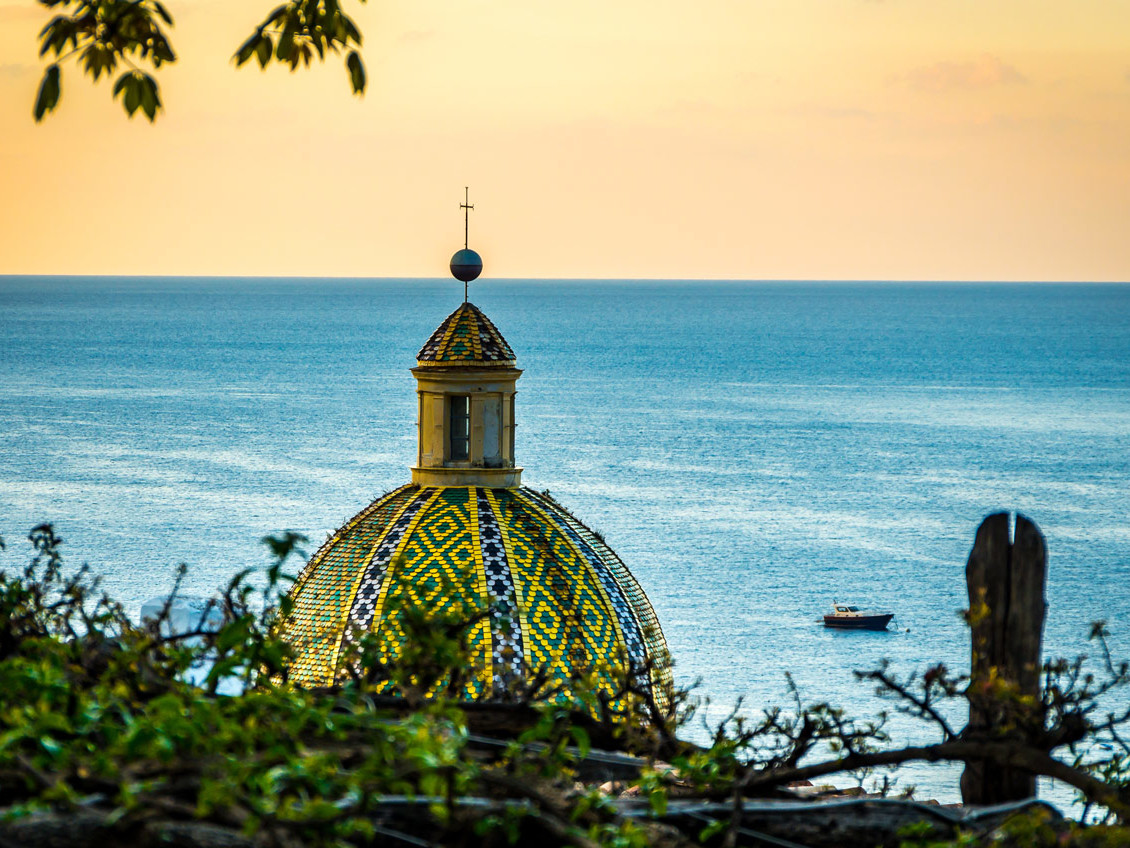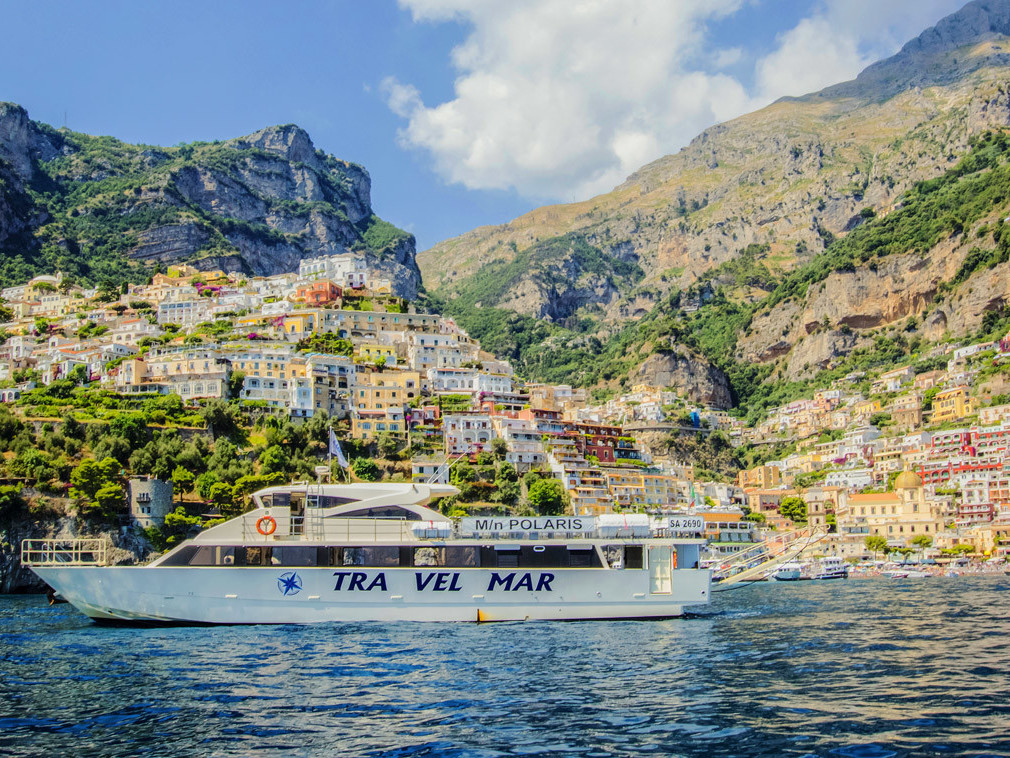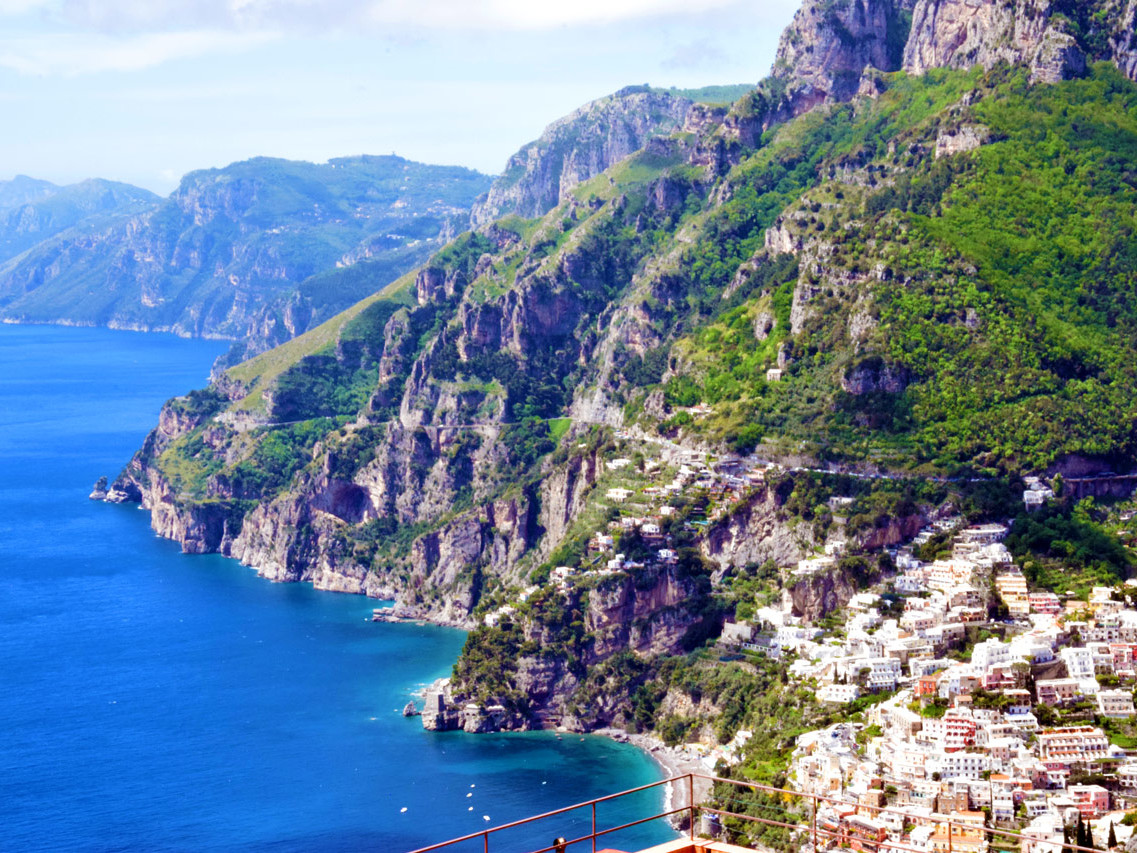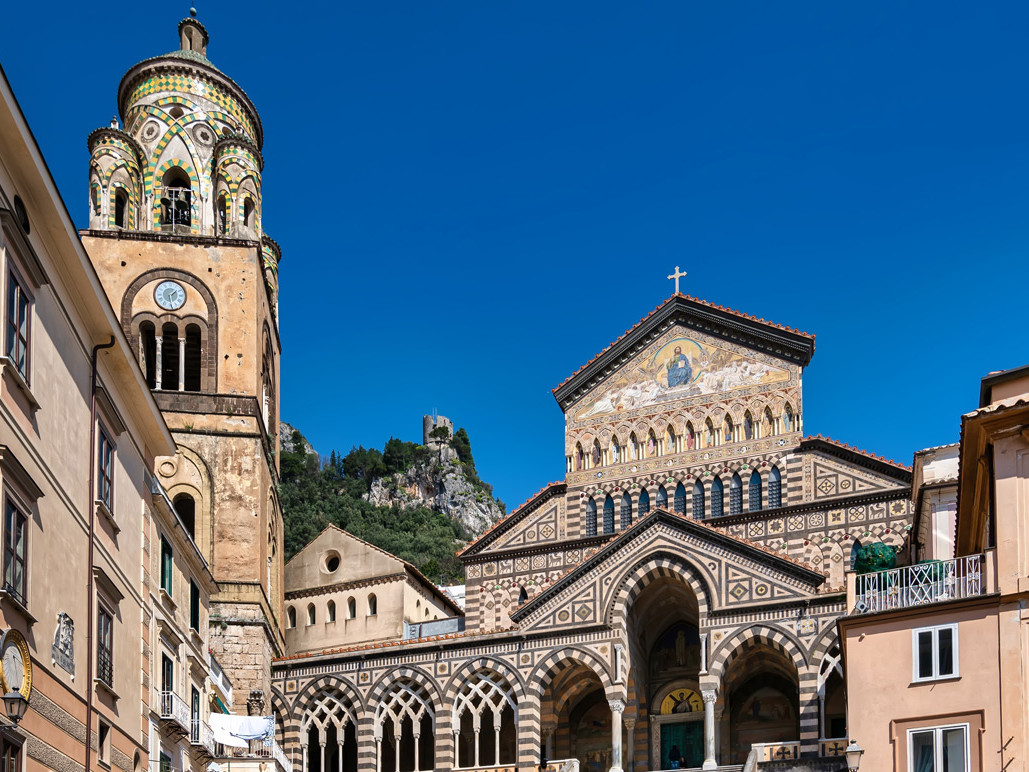THE CHURCH OF SANTA MARIA ASSUNTA IN POSITANO: BORN FROM A LEGEND
In the center of Positano, in the heart of the Amalfi Coast, lies one of the most beloved and photographed symbols of the town: the church of Santa Maria Assunta. Its origin is linked to an ancient and mysterious legend: let's discover together how it was born and the beauty it still holds!
by Roberta Cascone
The church of Santa Maria Assunta is a treasure right in the center of Positano. It is located in Piazza Flavio Gioia, just a few steps from the beach of Marina Grande and can only be reached on foot. With its striking dome covered with yellow, green and blue majolica tiles, it is one of the most admired and visited attractions by tourists. According to historians, the church, which was initially consecrated to St. Vitus, was erected by Benedictine monks who were in a monastery near the urban center of medieval Positano in the 10th century. It is likely, however, that it had even earlier origins, dating back to the 8th century, when an early monastic settlement arose on the remains of a Roman villa, which can still be visited today just below the church. The abbey is first mentioned in a document written in a manuscript from the late 11th century; it had great prestige until the mid-15th century, after which it was gradually abandoned because of increasingly frequent raids by Cilento raiders. Finally, restoration work was undertaken in the late 1700s and the church returned to its original splendor. The most interesting and mysterious aspect of the church, however, is the Byzantine icon that is preserved inside and is at the center of a fascinating folk legend.
share this article
The church of Santa Maria Assunta - Positano
The mystery of the Madonna icon
Popular tradition has it that the origins of the church of Santa Maria Assunta are linked to the arrival in Positano of a Byzantine icon of the Madonna that arrived there via a sailing ship from the East. This ran into a lull off the coast of Positano, but all attempts by the sailors to get it going again failed. At that point a voice was heard shouting "Posa, posa", that is “put it down!”: it came from an icon of the Virgin being carried on board! So it was that the crew pointed the bow toward the coast and the ship started moving again. Upon reaching the beach, the icon was given to the locals, who took it to a church near the square. The next morning, however, the effigy was found near the beach in a gorse bush, so the inhabitants decided to build a church at the site of the find. In fact, it is likely that the icon of the Madonna arrived in Positano around the 12th century, transported by Benedictine monks who frequented the trade routes of southern Italy. The mystery, however, has been passed down through the centuries, and the icon of the Madonna remains one of the most admired and treasured works in the place.
Art and architecture
Originally, the church consisted of a single nave. With the renovations carried out in the late 1700s it was divided into three naves with five arches and side chapels. In ancient times it was entrusted to the protection of St. Vitus, of whom a reliquary bust of the Neapolitan school from the 16th century remains. On the high altar is the famous Byzantine icon of the Virgin; to the right is the Chapel of St. Stephen in which an 18th-century wooden statue of the Madonna and Child is kept. Along the left aisle are the chapels of the Crucifix, the Annunziata, St. Vitus and St. Nicholas of Bari; the latter houses an artistic nativity scene with original 18th-century figures. Instead, the chapels of St. Anne, St. Anthony, Immaculate Conception and St. Blaise open along the right aisle. On the central door is also the choir section, with a majestic mechanical organ. Leaving, a few steps from the church is the bell tower, erected in 1707 by an anonymous Capuchin friar remembered with a plaque.
- The church of S. Maria Assunta, one of the symbols of Positano and the entire Amalfi Coast, is among the favorite locations for couples to celebrate their wedding!
The church can only be reached on foot because it is at the top of a flight of steps: if you want to visit it, it is very important to wear comfortable shoes and be prepared for a fascinating walk through the center of Positano.
fun facts
share this article


